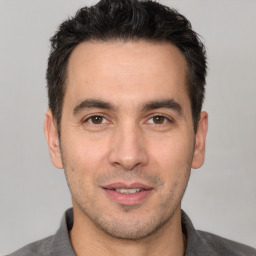Aim And Objectives
Aim: To Understand The Impact of Stigma on Patients with Mental Illness.
Objectives:
- To analyse the beliefs and norms of stigma with patients of mental illness.
- To determine the negative impact of stigma for the patient with mental illness
- To recommend ways to reduce the impact of stigma for the patient with metal illness.
Rationale & Practical Utility
In accordance with the current research, it is based on understanding the stigma that are being faced by patients with mental illness. There are different set of diseases that are faced by people and to overcome them, they consult professional who provide them with medical treatment. Further, there are different type of diseases for which people have developed negative perception due to which patients have to face stigma (Corrigan and et.al., 2015). The present research is focused on understanding the impact of stigma on patients with mental illness. Further, there are negative impact over health and the rate of reducing the issues or health problem.
There are many types of mental illness like Schizophrenia, Depression, Autism, etc. People do not prefer to visit professionals due to the type stigma that is faced by them. Further, one of the main issues that are faced by individuals with mental illness is discrimination. For example, within organization all workers need to be treated equally but when a person has metal illness, then they are discriminated by not hiring them (Corrigan, Druss and Perlick, 2014). The discrimination can be direct in which negative remark can be made on the individual with mental illness. Further, they themselves develop a perception that they are different when compared with other. This is a type of issue due to which they fail to perform the type of task or activity that is given to them.
From this research, one will be able to determined the main causes or problems that are faced by patient due to stigma in relation with mental illness. Further, proper analysis is made for the beliefs and norms in stigma on patients with mental illness (Sewilam and et.al., 2015). In addition to different ways will be determined that enable to reduce the impact of stigma for the patient who have mental illness.
Methodology
This is an important aspect that enables to present the research in effective manner. There are different type of tools, techniques that are involved in research methodology (Mackey and Gass, 2015). With this respect, for the current research, below given are the strategies and methods that will be followed by the investigator:
Research Strategy: This can be determined to be the important technique or strategy that enables to focus on the objectives that needs to be achieved. These are of two types which are qualitative and quantitative strategy. Among these two, qualitative strategy can be determined to be an effective research strategy that enables to focus on the models and theories that help in achieving the research aim and objectives. Further, consideration made by the strategy is related with subjective idea in context with the research topic (Taylor, Bogdan and DeVault, 2015). On the other hand, quantitative strategies is the one which enables to gather information with the help of analysis and measuring, this is done with the help of statistical techniques and tools. Both the tools are effective enough to make sure that the objectives that are set by the researcher will be achieved. When compared with both these strategies, researcher will make use of qualitative strategy. This is a type of effective tool that will focus on different type of theories that are developed by other researcher with the help of which the research objectives will be achieved.
Data collection: It is an important aspect that enable to gather information with respect to the current research. There are two type of research strategies which are: primary and secondary. When compared with these two research will make use of both these strategies. Primary strategies are those which are collected for the first time. In this research investigator will make use of questionnaire in which all the question related with the objectives will be included (Flick, 2015). On the other hand, secondary informations are those which are already being collected by some other person. It includes sources that will be used as books, journals, articles, etc. Both these data collection methods will enable to understand the perception of individuals that they have for the research topic which collected. There are different type of research that are already being collected by some other researchers and these are helpful enough to make sure that in depth information can be raised.
Sampling: This is considered to be the approach through which information is collected from the target respondents. It is difficult to get data from whole population and so sampling method is an important aspect that selects the most appropriate respondents who will be able to provide adequate information. There are two different type of methods which non probability and probabilistic sampling method. As per the present research, investigator will make use of random sampling. From large population few individuals are selected who have proper information or knowledge (Silverman, 2016). The information is gathered in the form of questions that are included in the questionnaire. As sample who will provide information are professionals who understand the mental conditions and provide them treatment. They will be most suitable respondents as they handle different type of cases in which they get to know the mental condition of patients. In addition to this, the questionnaire will be distributed among 20 professionals.
We tend to help you at every step regarding Academic Assistance
Get your Assignments Now!
Data analysis: There are various type of methods that can be followed through which the collected information can be analysed. It is also known as data analysis tool and it is considered to be effective tool for interpretation of data that helps to come up with appropriate outcome. The type of strategy that is being used is quantitative strategy and so that the type of data analysis method that should be used is thematics (Panneerselvam, 2014). This is a type of method that enables to present the collected information in form of tables, graphs, etc. there are many questions that will be asked in the questionnaire and thematic will enable to make proper analysis of the information from each of the respondents and it will be enable to come up with appropriate outcome the current research objectives that are being developed by the investigator.
Ethical consideration: There are about 20 respondents from whom information is gathered and as a researcher, it is important to make sure that all the personal information that is collected from them is not being shared to anyone and only the person who is authorised is allowed to access it (Smith, 2015). Further, safety of participant need to considered and they should be conveyed regarding the reasons for which the research is conducted. Further, information is being gathered from researches that are already being collected by some other researcher. In this context, there are conditions in which proper account needs to be made so that the data can be used for considering the current research. Further, information from other research can not be used as it is but it can only be used as reference. In addition to this, the issues or problems related to plagiarism should be avoided and there should be proper use of citation done.
Research Instruments
There are different type of instruments that can be implemented with the help of which the information that is required for conducted the research in effective manner can be identified. For this purpose, there are many types of instruments that can be used. In this context, it includes focus groups, case studies, observation, questionnaire, survey, etc. Among these, focus groups are those in which specific groups are targeted that can deliver information (Mackey and Gass, 2015). Further, case study contains information with the help of conditions that has caused and it enables to get relevant information for the same. Observations is type of instrument that considers the skills that enables to find out and collect information with through observing. Further, it includes questionnaire, questions are developed as per the type of objectives that needs to be achieved. It enables to determine the perception that has been developed by individuals for the same (Taylor, Bogdan and DeVault, 2015). Further, it consists of interview in which questions are asked to gather information. When compared with all these instruments, researcher will make use of questionnaire and it will be asked from 20 professional who handle patient with metal illness. There are about many questions that will be covered and each of the questions made will be as per the research objectives. Further, the questionnaire will be distributed with the help of email, directly, etc. In accordance with the above made, table it can be stated that within the time of 10 weeks investigator will be able to complete the research project. All the activities that are being set consist of time duration in which that has to be completed. With this respect, in case the time determined if it is not be completed, then other activities will also get delayed and the total period of time that is taken will get increased. There are different chapters that are included in completion of research (Flick, 2015). In this context, by following the above given table, investigator will be able to when all the activities are followed in accordance with time duration that are planned, then it will be helpful to complete the research within 10 week time.
Review Of Literature & Research
According to Pescosolido (2013) there are negative perception which are developed by people from other parts of the world on the different type of diseases that are faced. Due to these negative perception developed, the individuals who face any type of diseases with sigma, they do not prefer to consult a professional. This is because the mentality that developed that they will be discriminated by other people (Silverman, 2016). It is a type of issue in which the type of diseases that are faced by individuals gets serious and they are not able to overcome them. Further, there are different type of diseases in relation with mental illness and these are considered to make people different from others. Stigma can be determined to be a type of situation when individual views others in negative way. This can be due to personal trait or characteristic. In respect with metal illness the stigma that is developed is common. In this context, stigma leads to discrimination.
There are many negative impact that are faced by patients because of mental illness. With this respect, it includes lack of understanding by friends, co workers, friends, etc. The type of treatment that needs to be received is of high cost. People prefer to not get in context with individuals who have illness related with mental disorders. There are different type of considerations that can be made through which the rate of stigma that are faced by patients can be reduced (Panneerselvam, 2014). In this context, one of the effective way is by getting proper treatment. When the type of disease due to which stigma is caused can be eliminated effectively and efficiently. There are diseases that does not have proper treatment and in such condition the rate of problem that are faced by them is high. The self motivational factors that they have is also lost and they are not able to over the issues related to health. When the trust of the confidence that one has should not be lost and this can cause to shame and the strength to face others is also lost.
Family and friends can be determined to be the most effective sources that are helpful to fight the stigma and it also required for the patients to have the strength to fight over the negative thoughts that patients have (Smith, 2015). This enables to overcome the type of illness that are faced by patients in effective manner.
Areas/Issues For Further Exploration
The current research is conducted for a particular area of study. There are different type of areas that can be considered. In this context, the topic is on stigma by patient with metal illness. There are many types of diseases that specifically can be focused. Further, there are other physical diseases in which stigma can be identified. Further, different people have diverse set of preference and it changes as per the type of culture and beliefs that they follow (Mellor and et.al., 2013). With this respect, the study can be done considering different areas of the countries. Further, there is another set of aspect in which information can be gathered if from nurses who have direct interaction with patients. They are able to provide adequate information for the topic of research.
Further, there are different set of issues that are being faced by researchers when project is undertaken. With this respect, one of the main issue is related with availability of finance. For each of the activities that are developed, it consists of cost that is incurred. With this respect, it is important to make sure that there is proper planning made with the help of which the cost may not get exceeded (Boyd and et.al., 2014). Further, the time in which activities are developed should be completed and when this is not completed, then the cost that is determined will increase. With this respect, it can be stated that cost incurred for each of the activity should be effectively planned and it should be completed within the speculated time period.
References
- Boyd and et.al., 2014. Internalized Stigma of Mental Illness (ISMI) scale: a multinational review. Comprehensive psychiatry. 55(1). pp.221-231.
- Corrigan and et.al., 2015. Diminishing the self-stigma of mental illness by coming out proud. Psychiatry research. 229(1). pp.148-154.
- Corrigan, P. W., Bink, A. B., Fokuo, J. K. and Schmidt, A., 2015. The public stigma of mental illness means a difference between you and me. Psychiatry research. 226(1). pp.186-191.
- Corrigan, P. W., Druss, B. G. and Perlick, D. A., 2014. The impact of mental illness stigma on seeking and participating in mental health care. Psychological Science in the Public Interest. 15(2). pp.37-70.
- Flick, U., 2015. Introducing research methodology: A beginner's guide to doing a research project. Sage.
You may also like:
Impacts of Quality Management in Increasing Customer Satisfaction
Impact of Mental Health System













